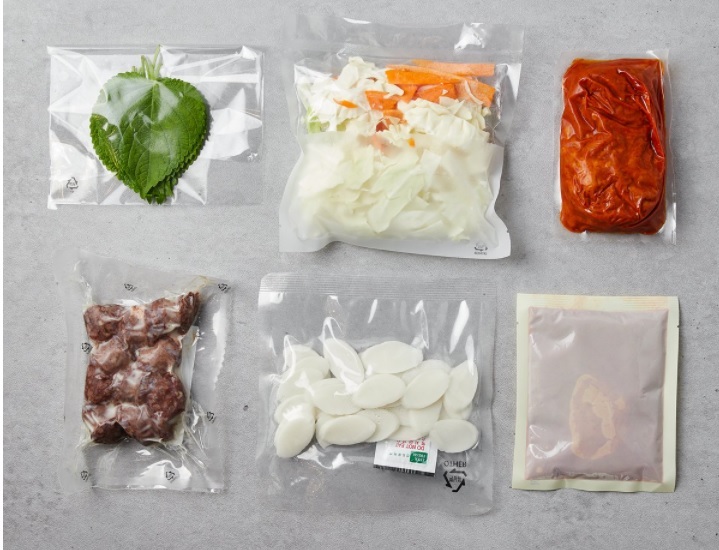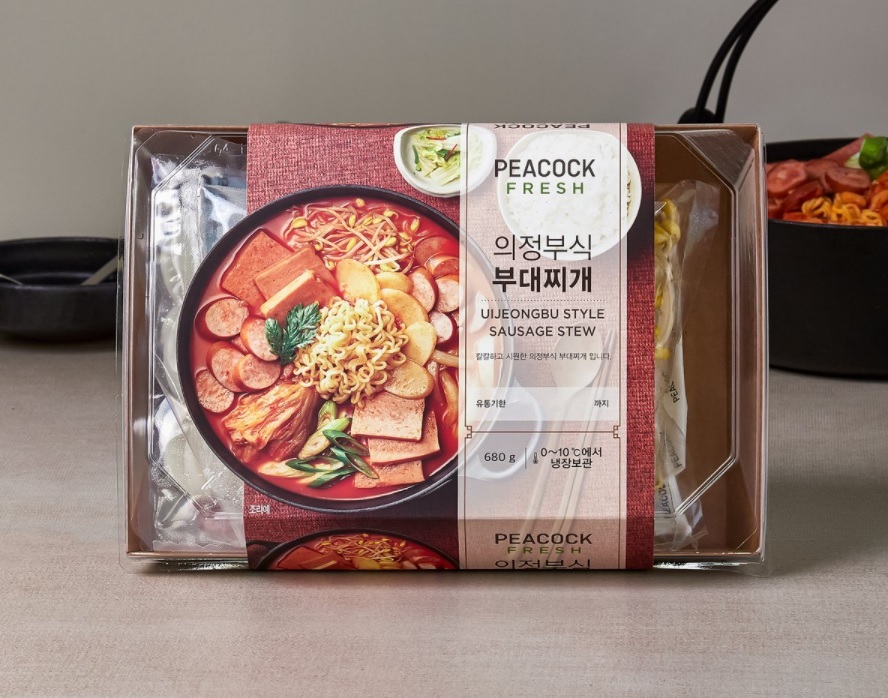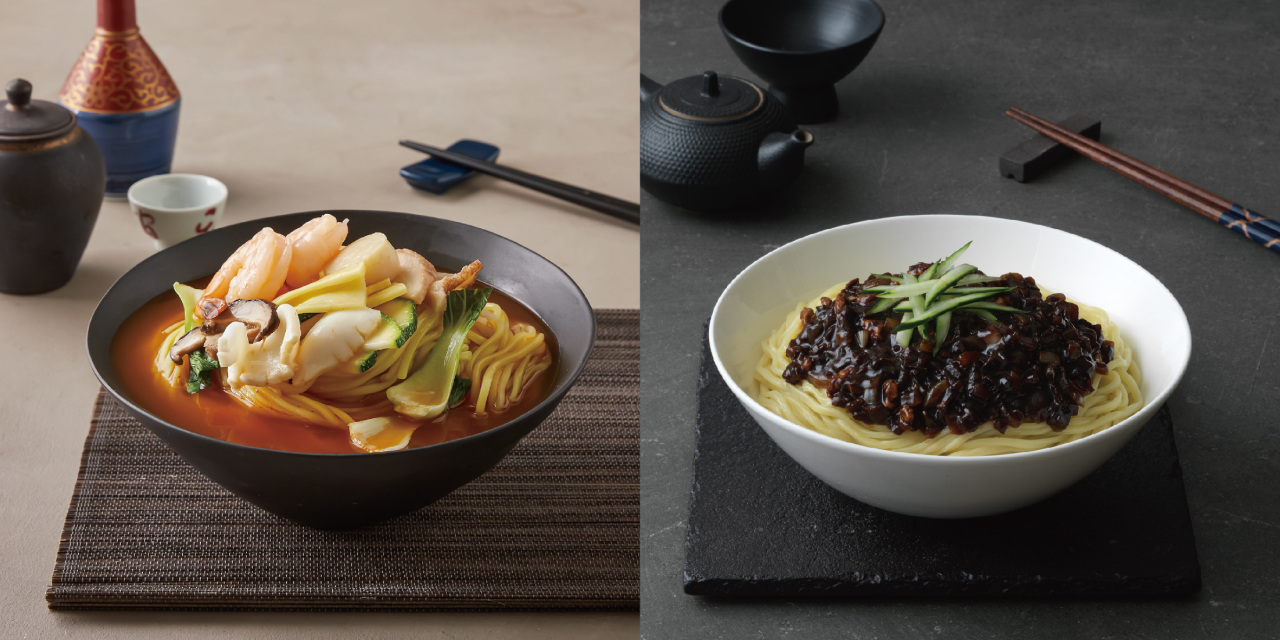
Components of a meal kit, with ingredients individually packaged (SSG.com)
Upon opening up a meal kit of spicy chicken ribs, I realized at once the cooking wouldn’t be too difficult.
The chicken ribs, special sauce, vegetables, sweet potatoes and rice cakes were in separate packaging, and all were prepped for cooking. The cooking instruction on the back of the package involved putting the ingredients one by one into a pot. My family's reaction to the dish was unanimous: “This tastes just like what is sold in restaurants.”
Many aspects of daily life have changed as people stay home more than ever in pandemic times. With restaurants ordered to close at 9 p.m. as part of the government’s stricter social distancing scheme, many retail giants have turned to the growing market of home meal replacements and meal kits.
Home meal replacements refer to precooked food that can just be heated to eat. On the other hand, meal kits require around 15 minutes of simple cooking and usually separates the sauce and ingredients to ensure the best possible taste.
Although the meal kit market began to take off about four years ago, it has reached new heights during the COVID-19 pandemic, with the Korea Rural Economic Institute predicting the market value to reach 700 billion won ($646 million) in 2024.
In the early days, meal kits were developed and made by meal kit service companies and delivery companies. Before long, online delivery services like SSG.com and Market Kurly began advertising meal kits developed in collaboration with famous restaurants, bringing restaurants’ signature dishes to the dinner table. Restaurant meal replacements and meal kits were introduced as the next stage of home meal replacement.
The use of trustworthy brand names was a successful marketing strategy.

Odeng Sikdang Budae-jjigae (SSG.com)
The most popular meal kit sold by E-mart’s meal kit brand Peacock this year has been Odeng Sikdang Budae-jjigae, selling over 180,000 kits since its release in April. Budaejjigae is a stew of sausage, ham and kimchi among other ingredients, which is said to have originated from using leftover food from US Army bases here. The product’s advertisement claimed it had reproduced the taste of the 60-year-old Odeng Sikdang, a restaurant in Uijeongbu, Gyeonggi Province, where budaejjigae is said to have originated.
Other popular meal kits include one that claims to have replicated the 50-year-old taste of a restaurant in Busan famous for octopus, cow intestine and shrimp hot pot. Popular dishes at hotel restaurants are also available in meal kit form.
This year has seen even greater choice for consumers as companies have competed to find famous restaurant dishes and replicate them in meal kits.
“We consider the Michelin Guide Seoul for the preliminary selection and then go to the individual restaurants to taste the dishes being considered for a meal kit,” said an official at E-mart. “We try to target the amount of time it takes to cook a meal kit to 10 to 15 minutes.”

Two signature dishes of Chinese food restaurant Hogyeongjeon at Shinsegae Chosun Hotel (Shinsegae Chosun Hotel)
Restaurants that have jumped on the bandwagon range from regionally well-known eateries to hotel restaurants. For example, Shinsegae Chosun Hotel’s Chinese restaurant Hogyeongjeon’s jjajangmyeon (noodles in black bean sauce) and jjamppong (noodles in spicy broth) sold more than 100,000 kits in the first 100 days of their release on SSG.com.
“In order to bring the flavor of the restaurant to households, we went through numerous trials,” said chef Yang Bo-an of Hogyeongjeon. “With many people staying at home, not only did the number of people trying a meal kit for the first time increase, but also customers wanted the taste of restaurants at home.”
For famous restaurants, meal kit collaborations with large companies offer an additional source of revenue as well as the opportunity to increase brand recognition.
“We launched our meal kit with Shinsegae primarily to advertise our brand. Also, since Shinsegae is a major company, it was seen as an opportunity to boost revenue. As long as we made profit, we saw no reason not to take them up on their offer,” said an official at Gunsan Squid, a restaurant chain famous for its marinated squid and beef.
Even before the pandemic, famous restaurants like Gunsan Squid and Hanchon Seolleongtang that have considerable size and multiple chain restaurants prepared HMR products to take advantage of the nascent market. With the growing popularity of meal kits, these restaurants modified their premade products to create meal kits.
Restaurants receive a commission for each meal kit sold, as well as the initial contract fee for the use of the brand name, although contracts vary depending on the type of restaurant.
The popularity of the meal kits, however, does not appear to have much impact on the number of customers at individual restaurants.
“I have yet to see a customer who said that they came to the restaurant because they had the meal kit,” said one restaurant owner. “However, the benefit is that since the meal kits can be purchased in restaurants, many diners buy them in multiples when they see them stationed at the front.”
For smaller restaurants, the terms of business may be less ideal. However, with the new coronavirus causing diners to shun eating out, restaurants have felt they had to take every opportunity possible.
A restaurant with a popular meal kit online, which wished to remain anonymous, reported that the meal kit only used their name and they had only given suggestions on the final meal kit product.
“The ingredients in the meal kit are much worse than the ones we use in the store. It’s inevitable because the price of the meal kit is much lower. We just lend them our name after they create a product,” said a restaurant official. “Despite being popular online, we don’t make much profit from it. It is more about making our store known. We had little change in the number of customers.”
With the food-at-home market rapidly changing, many restaurants are already preparing for the next new thing.
“The first step was HMR and now it’s meal kits. I expect the next step of food-at-home will be HMR that can replicate the dishes of famous restaurants without the need to cook,” said a marketing official at Gunsan Squid.
By Lim Jang-won (
ljw@heraldcorp.com)








![[Graphic News] More Koreans say they plan long-distance trips this year](http://res.heraldm.com/phpwas/restmb_idxmake.php?idx=645&simg=/content/image/2024/04/17/20240417050828_0.gif&u=)